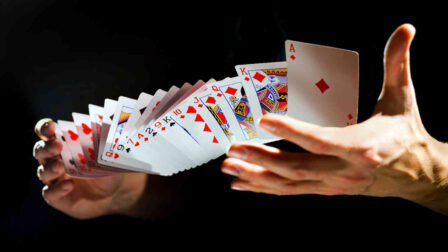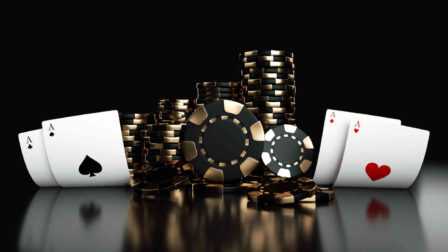Does a Flush Beat a Straight in Poker & Why?
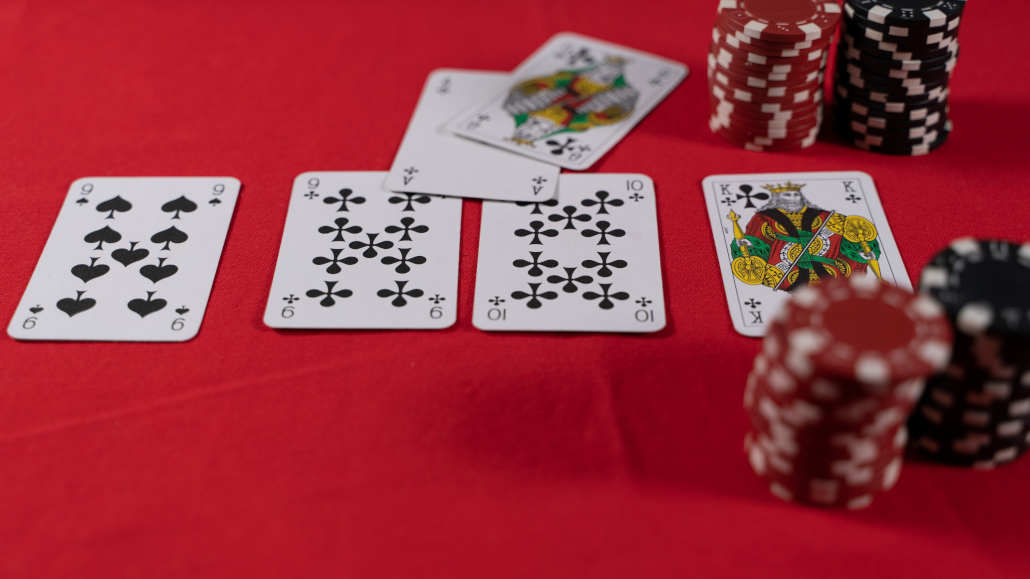
5 minutes
Last Updated: January 4, 2023
Before you can dive deeper into poker strategy, it’s crucial you get your basics straight. Knowing what beats what in Texas Hold’em and how poker hand rankings work is the first step in that process.
In this article, we’ll clear the air on a topic that many beginners find confusing: does a flush beat a straight in poker, or is it the other way around?
If you’re here just for a straightforward answer, it is yes – a flush beats a straight in poker every time.
But if you are interested in finding out more about these two combinations as well as the reasons why a flush beats a straight in poker, keep on reading. We explain all there is to know about these two hands in detail.
What Is a Flush in Poker?
A card combination that is made out of five cards of the same suit in which at least one of the cards in the combination is not sequential is called a flush.
Two examples of a flush in poker:
- J♠9♠7♠6♠5♠ – a jack-high flush
- Q♣9♣8♣7♣5♣ – a queen-high flush
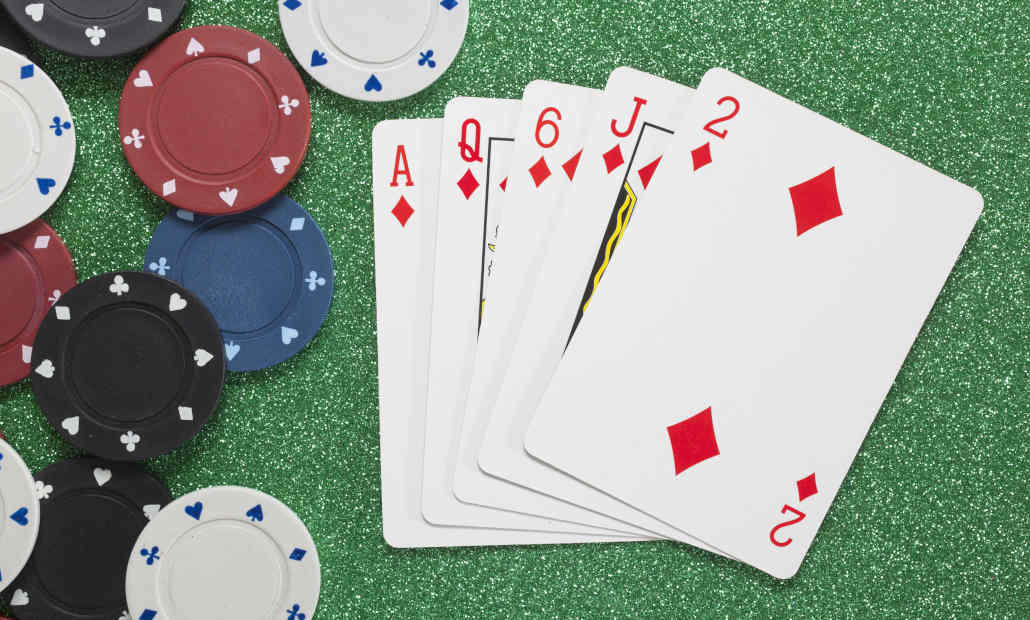
Note that if all of the cards in a 5-card combination are of the same suit and sequential, that hand combination is called a straight flush, i.e.:
- 5♠4♠3♠2♠A♠ – a five-high straight flush
- 10♥9♥8♥7♥6♥ – a ten-high straight flush
Lastly, if all of the cards in a flush combination are sequential with the ace being the highest ranked card in the combination, this combination is called a royal flush.
There are four possible royal flush combinations in poker:
- A♠K♠Q♠J♠10♠ – royal flush in spades
- A♥K♥Q♥J♥10♥ – royal flush in hearts
- A♦K♦Q♦J♦10♦ – royal flush in diamonds
- A♣K♣Q♣J♣10♣ – royal flush in clubs
Rules for Ranking Flush Combinations in Poker
Depending on the situation, rules for ranking flush combinations in poker are the following:
- Ranking the flush based on the highest card in the combination
- Ranking the flush combination based on the 2nd highest card in the combination
- Ranking the flush based on the 3rd highest card in the combination, etc.
Here are some of the examples of how to apply these rules in practice.
- Hand 1) K♠10♠9♠8♠5♠ (a king-high flush) vs.
- Hand 2) Q♠10♠9♠8♠5♠ (a queen-high flush)
In this situation, we apply the first rule since the highest ranked cards are different in both combinations. Because the highest ranking card in Hand 1 (K) outranks the highest ranking card in Hand 2 (Q), Hand 1 outranks Hand 2.
- Hand 3) A♦J♦8♦7♦5♦ (an ace-high flush) vs.
- Hand 4) A♦Q♦8♦7♦5♦ (a queen-high flush)
Because the highest card in both Hand 3 and Hand 4 is of the same rank, here we apply the second rule, i.e. comparing the rank of the second-highest card in the combination.
Since the rank of the second- highest card in Hand 4 (Q) outranks the rank of the second- highest card in Hand 3 (J), Hand 4 outranks Hand 3 in this case.
These same rules are used to determine the rank of straight flush combinations, for example:
- Hand 5) J♣10♣9♣8♣7♣ (a jack-high straight flush draw) vs.
- Hand 6) 10♣9♣8♣7♣6♣ (a ten-high straight flush draw)
Because the highest ranked card in Hand 5 (J) outranks the highest ranked cards in Hand 6 (T), Hand 5 outranks Hand 6.
The Total Number of Flush Combinations in Poker
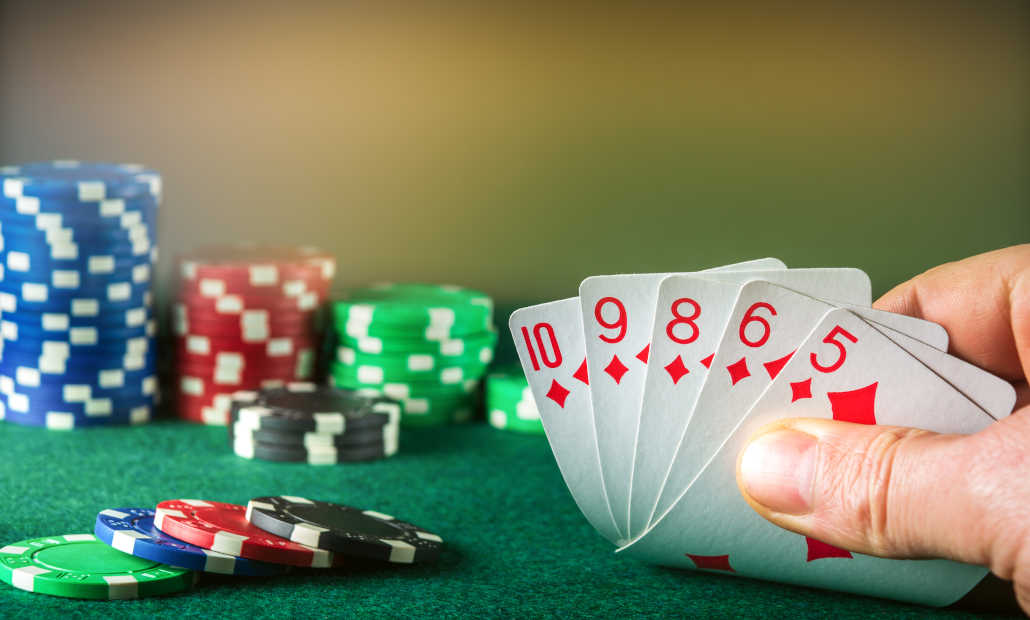
Poker is played with a standard card deck that consists of 52 cards divided into 4 suits (hearts, diamonds, spades, and clubs) with each suit consisting of 13 card ranks (A, K, Q, J, T, 9, 8, 7, 6, 5, 4, 3, 2).
Based on this we can calculate that there are:
- 5,108 unique flush combinations
- 36 unique straight flush combinations (9 for each suit)
- 4 unique royal flush combinations (hearts, diamonds, spades, and clubs)
In theory, each suit has ten possible straight flush combinations, but since the highest straight flush in each suit has its own name (royal flush), these four combinations are in a separate category from other straight flush combinations.
What Is a Straight in Poker?
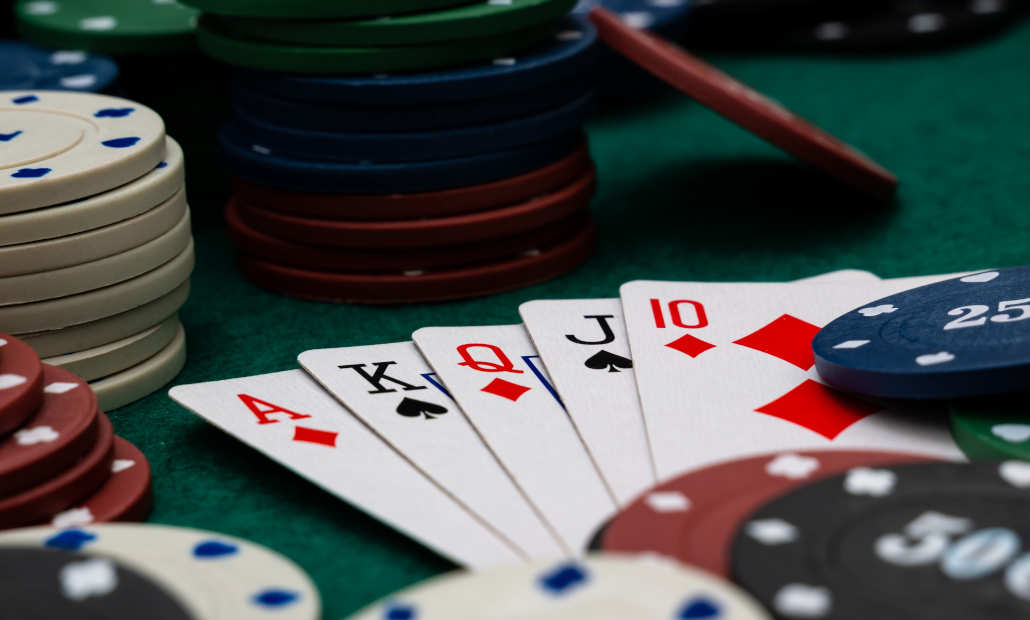
A card combination that consists of five consecutive cards, of which at least one card is of a different suit than the others is called a straight. For example:
- A♦K♠Q♦J♦10♣ – an ace-high straight (also known as the broadway straight)
- 5♠4♠3♦2♦A♣ – a five-high straight (also known as the wheel)
As we’ve mentioned when talking about different types of flushes, there are two more types of straights: straight flushes and royal flushes.
Rules for Ranking Straight Combinations in Poker
In poker, straight combinations are ranked based on the rank of the highest card in the combination.
For example:
- Hand 7) 10♠9♣8♣7♣6♦ (a ten-high straight) vs.
- Hand 8) 9♣8♣7♣6♦5♥ (a nine-high straight)
In this example, Hand 7 outranks Hand 8, because the highest ranking card in Hand 7 (T) outranks the highest ranking card in Hand 8 (9).
The Total Number of Straight Combinations in Poker
If we use the same information we used to calculate possible flush combinations, here are the results we get for the possible straight combinations in poker:
- There are 10,200 unique straight combinations
- There are 36 unique straight flush combinations (9 for each suit)
- There are 4 unique royal flush combinations (A to T straight in the same suit)
As you can see the only difference between these hands is the number of possible combinations.
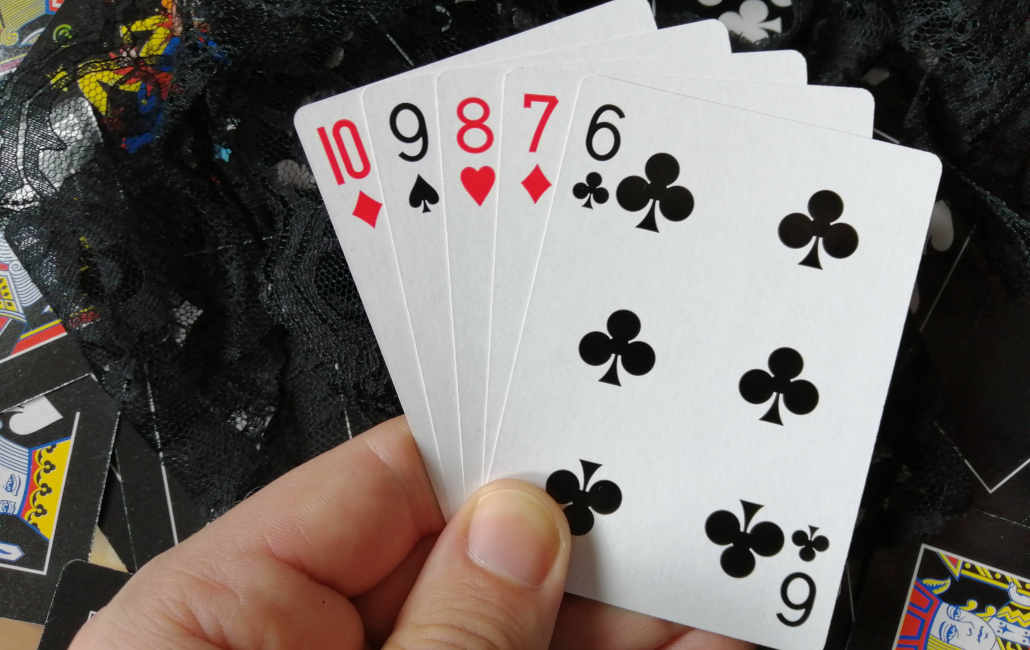
Does a Flush Beat a Straight in Poker?
We have listed all of the made hand combinations in poker as well as their rankings in the table below.
| Hand | Combinations | Probability | Odds |
| Royal Flush | 4 | 0.000154% | 649,739-to-1 |
| Straight Flush | 36 | 0.00139% | 72,192-to-1 |
| Four of a Kind | 624 | 0.02401% | 4,164-to-1 |
| Full House | 3,744 | 0.1441% | 693-to-1 |
| Flush | 5,108 | 0.1965% | 509-to-1 |
| Straight | 10,200 | 0.3925% | 254-to-1 |
| Three of a Kind | 54,912 | 2.1128% | 46-to-1 |
| Two Pair | 123,552 | 4.7539% | 20-to-1 |
| One Pair | 1,098,240 | 42.2569% | 1.37-to-1 |
As you can see, each hand in poker is ranked based on the odds of putting it together.
If we pay attention to the two hand combinations that interest us the most at the moment, the flush and the straight, we can conclude the following:
There are 5,108 possible flush combinations in poker, which means that the odds of making a flush in any given hand are 509-to-1 or 0.1965%.
On the other hand, there are 10,200 possible straight combinations, which means that the odds of putting together a straight in any given hand are 254-to-1 or 0.3925%.
Based on this information, we can see that the odds of making a flush are two times lower than the odds of having a straight.
The strength of a poker hand is based on the frequency at which it occurs and this is why a flush beats a straight in poker!



















